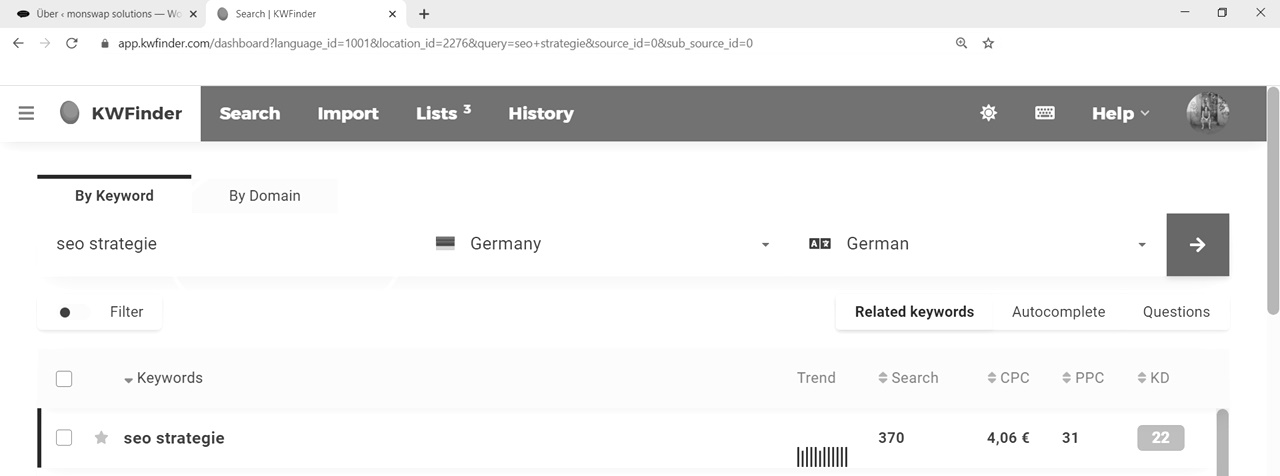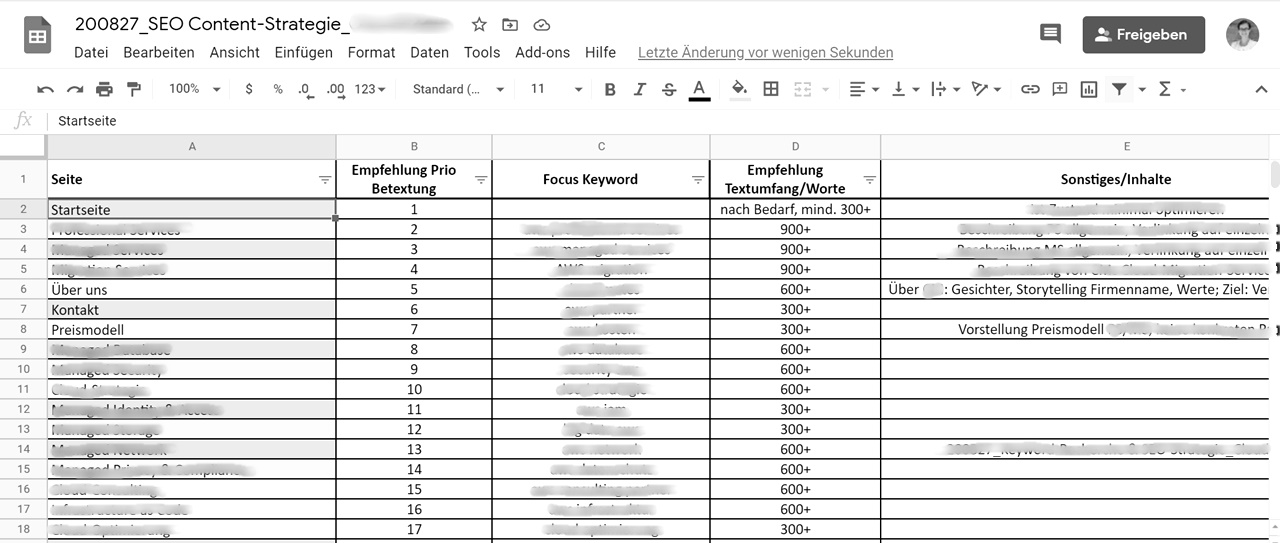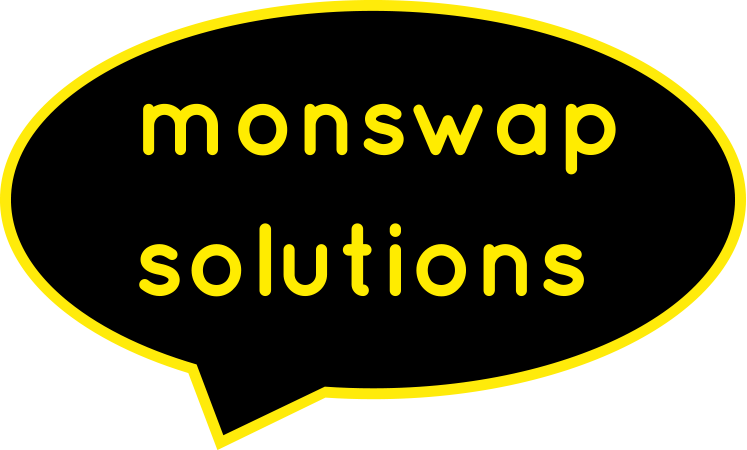You want to take your business from “we’re doing something online because that’s what companies need to do” to “we generate a lot of revenue online”? Sounds like your next logical step is creating a content strategy for SEO. Let me show you how I develop this kind of strategy for my clients as a content SEO consultant.
Content marketing + SEO = content strategy for SEO
Imagine search engine optimization (SEO) and usability (UX) have a baby. This SEO-UX creature would combine the powers of its two “parents”. It would attract prospects on the Internet and turn them into satisfied customers.
When you use a professional SEO content strategy, your content works much harder. An optimized website, blog or newsletter will ensure that you are visible on Google AND engaging to customers.
As a German SEO content consultant, I can confirm: it can be done. I promise!

Content SEO strategy: create, implement, enjoy your success
Good things happen when you develop blog and website content strategically. If you tick the boxes for content-driven SEO and usability you can expect things to play out as follows:
- Your website will be found on Google.
- More and more people visit your website or blog (traffic).
- Here they will find unique, well structured, and up-to-date content that offers real value.
- People will stay on your website for longer (average time spent).
- Visitors will subscribe to your newsletter or share your content on social media.
- You will extend your company’s business scope online as well as offline… (reach)
- … and gain new customers (conversion).
Are you curious now? Very good. Let me show you now, how I go about creating such a content strategy for SEO.
Create a content SEO strategy in 5 1/2 Steps ‒ this is how it’s done
You can divide an SEO content marketing strategy into 5 phases:
- Analysis
- Goals
- Keyword research
- Strategy development
- Action plan
What about 5 ½?
Well, that is where the magic happens. We use all that planning to create content that is relevant and enjoyable for your customers.
You want your content to drive qualified leads to your website. If you follow the five previous steps, you will create a solid foundation for business growth.
1. SEO & content audit (The situation now)
During the audit phase, I take a close look at your website, if you have one (if not, we go to step 2). I want to understand the current state of your content from an SEO and UX perspective.
For example, which copy, images, and videos do you currently use? Is this content already SEO optimized? If so, is out of date?
Do you have a keyword strategy? If so, has the intended search intent changed since the original SEO strategy was created?
Those questions are all part of a classic SEO content audit.
2. Vision (goals)
Now that I know the current state, I create a questionnaire. It will help me to get in touch with you and your business: How do you see your company’s future development?
You will have a vision for the future. What is your main focus? Which topics or products are already doing well online, which do you want to position more prominently? Who is your target group?
Together, we will discuss these and other topics ‒ usually in a virtual kickoff workshop.

3. Keyword research (targeting)
With all this information gathered, I now know what to look for when conducting your keyword research. Depending on your branch, I will first find the 100-150 most relevant keywords for your business. For this, I use common sense and various online tools.

During my keyword research, I take various factors into account: search intent (SIO), search volume and trends, as well as what your competitors are doing.
Based on these factors, I then develop your individual keyword strategy. It includes synonyms and keywords that cater to the same search intent.
4. Strategy Development (How to get there)
I now “translate” this keyword research and use it to develop an SEO content strategy. This includes:
- Which search terms are most relevant for your online marketing (content prioritization).
- Where you should start, and in which order you should create content for which keywords.
- Which keywords need cornerstone content, and what amount of SEO copy makes sense for other keywords.
- Which keywords are best suited for each type of content: blog post, landing page, product descriptions, etc.

With this content strategy you now have a clear framework for on page SEO. You can now bring your SEO content marketing strategy to life in a way that makes your website relevant for customers and search engines.
5. Determine Measures
At this point, we usually sit down together and create an action plan based on your budget and schedule. During this step, we define our way of working and determine the specific steps for your personal SEO content marketing strategy.
We ask ourselves questions like:
- Who is responsible for which task? When, how, and where? This includes writing SEO copy, image research, project management, SEO translation, newsletters, web design, and creating a Google Business Profile.
- Which tasks can you cover internally and which ones will you outsource (e.g. to an SEO copywriter)?
- Which content and topics should be included in the content planning, and when?
- What SEO tools do you want to work with?

In this step, most of my clients opt for an (online) workshop where I can sit down with all decision makers and stakeholders.
5 ½. Implementation
Congratulations: Your brand-new content strategy for SEO is now reality! Now it is “simply” a matter of putting your plan into action over the coming weeks and months. And continually monitoring and measuring its success to ensure that your website content strategy works as hard as possible, for as long as possible.
Some of the best content is evergreen, and only needs an occasional update to keep driving business your way.
Creating an SEO content strategy: How I can support you
As a consultant, I develop content SEO strategies for businesses every day. To do this, I use questionnaires, (online) SEO workshops, and live video conversations.
I can also support you with the implementation, for example by editing, translating, or creating SEO copy.
Come and say hello on LinkedIn.
Or find out more about me…

What clients ask me about SEO content strategies…
How do I know that I need a content strategy for my website?
You have a blog, but you do not know how to write a blog post so that customers will actually read it ‒ and take action? You have been asking yourself for months now: “Would a newsletter be a good idea?”
Maybe your company is about to have a website relaunch, and you need SEO copy, a content audit, or a logical structure for the new website. Of course, engaging content in all relevant languages that gets shared on LinkedIn or other relevant social networks is always useful…
If you are nodding your head now, then a content and SEO strategy is your next logical step.
What are the benefits of a German keyword strategy?
SEO content marketing works strategically. It does so by using tools that recognize individual search queries by frequency and search intent.
For example: in 2024, 280 people per month searched for “german seo” worldwide. That are 270 more people than those who searched for “german seo writer”.
Although both keywords have a large intersection, you will reach a larger audience with the first one. Whether it reaches your target group or not depends on what you are offering. With a German keyword strategy, you can justify many of your Online Marketing decisions through numbers.
Let’s face it: content production costs a lot of money.
Do you want to leave your company’s success to chance? Or do you want to know exactly how big your German-speaking target group is and what makes them tick?
Plus: one of the great bonuses of SEO-based content marketing is that you will always have great topics for your content production. As long as customers are searching for your products or services, you can provide them with content that offers them added value, thanks to a German keyword strategy.
Why a Content Strategy for SEO?
To increase profit. With a targeted content strategy from a professional SEO consultant you save money and increase revenue.
a) Save money
Without a content strategy for SEO, you spend time and money creating content for your blog, website, or social media profile. Unfortunately, no one knows whether this content actually turns prospects into customers.
You cannot quantify value without attribution, and that is where content strategy and benchmarking come in. A considerable percentage of your costs and time goes to waste ‒ and often nobody knows how or why it happened.
This situation changes for the better if you approach your content and SEO with a strategic mindset.
b) Increase revenue
Without a content strategy for SEO, you spend time and money creating content for your blog, website, or social media profile. Unfortunately, no one knows whether this content actually turns prospects into customers. You cannot quantify value without attribution, and that is where content strategy and benchmarking come in. A considerable percentage of your costs and time goes to waste ‒ and often nobody knows how or why it happened.
This situation changes for the better if you approach your content and SEO with a strategic mindset.
Care to share your own experiences?
Have you made your own experiences with creating a content strategy for SEO? Do you have ideas or questions about creating an SEO content strategy? Let me know. I look forward to your comment.




